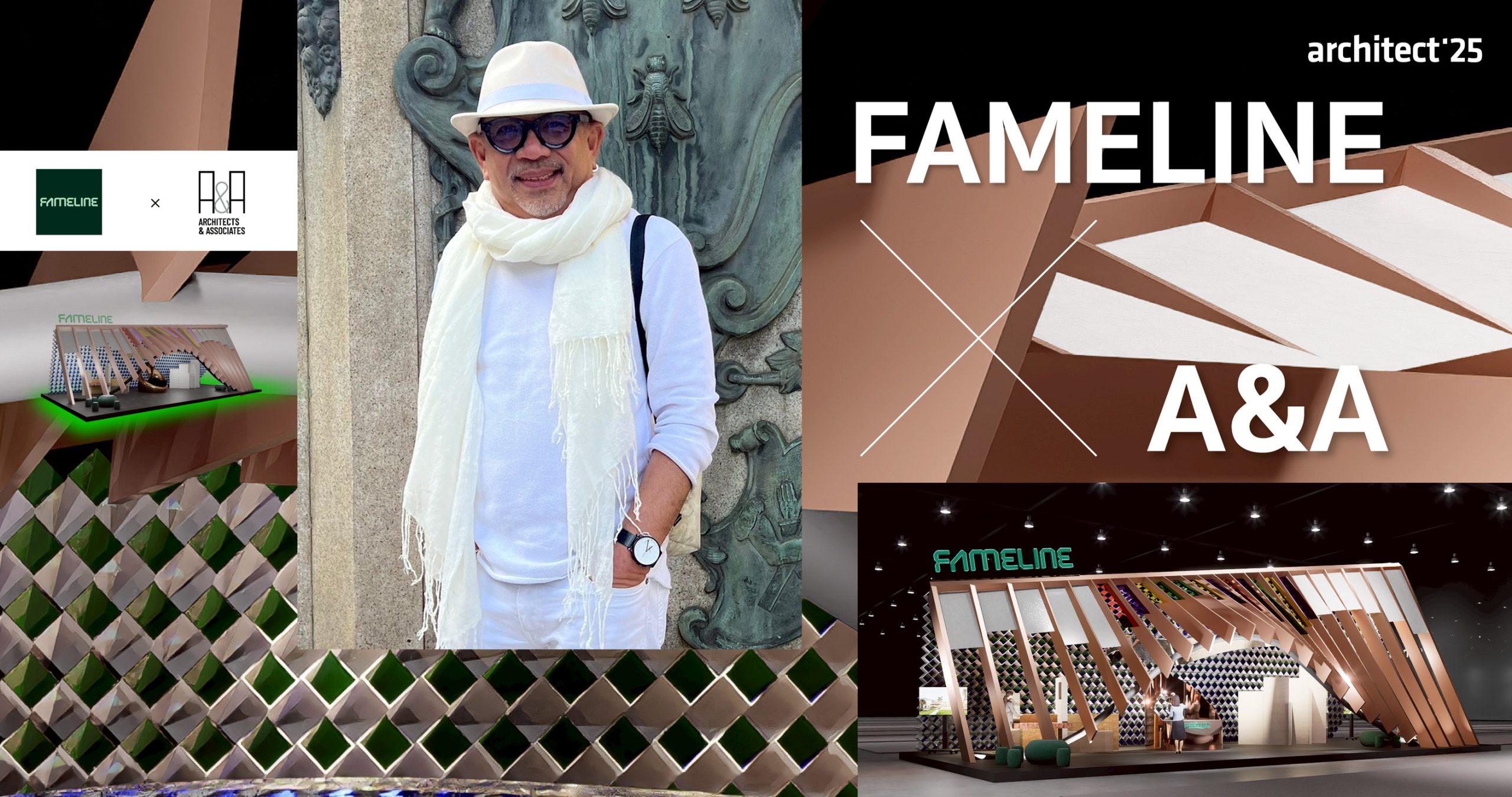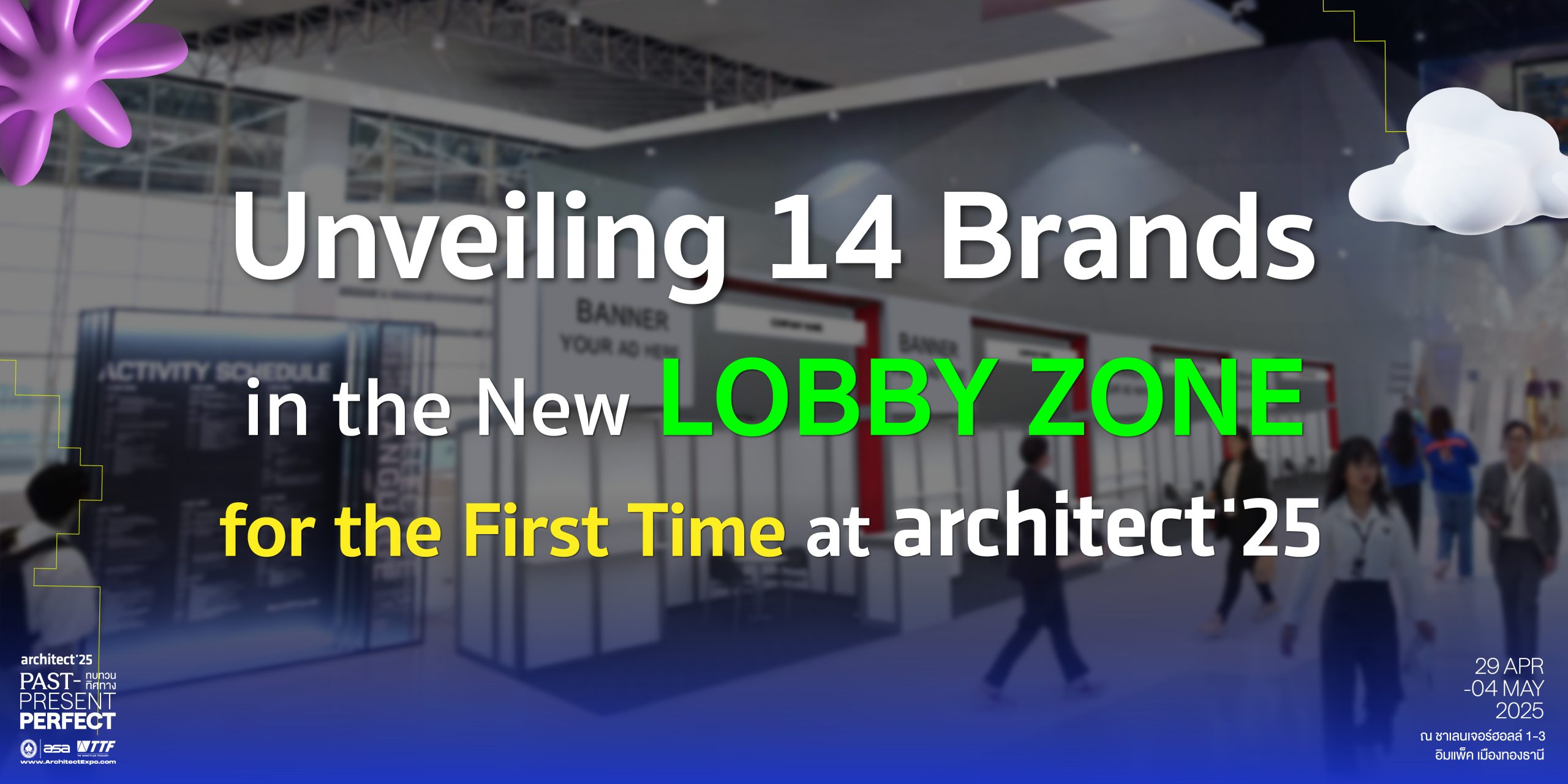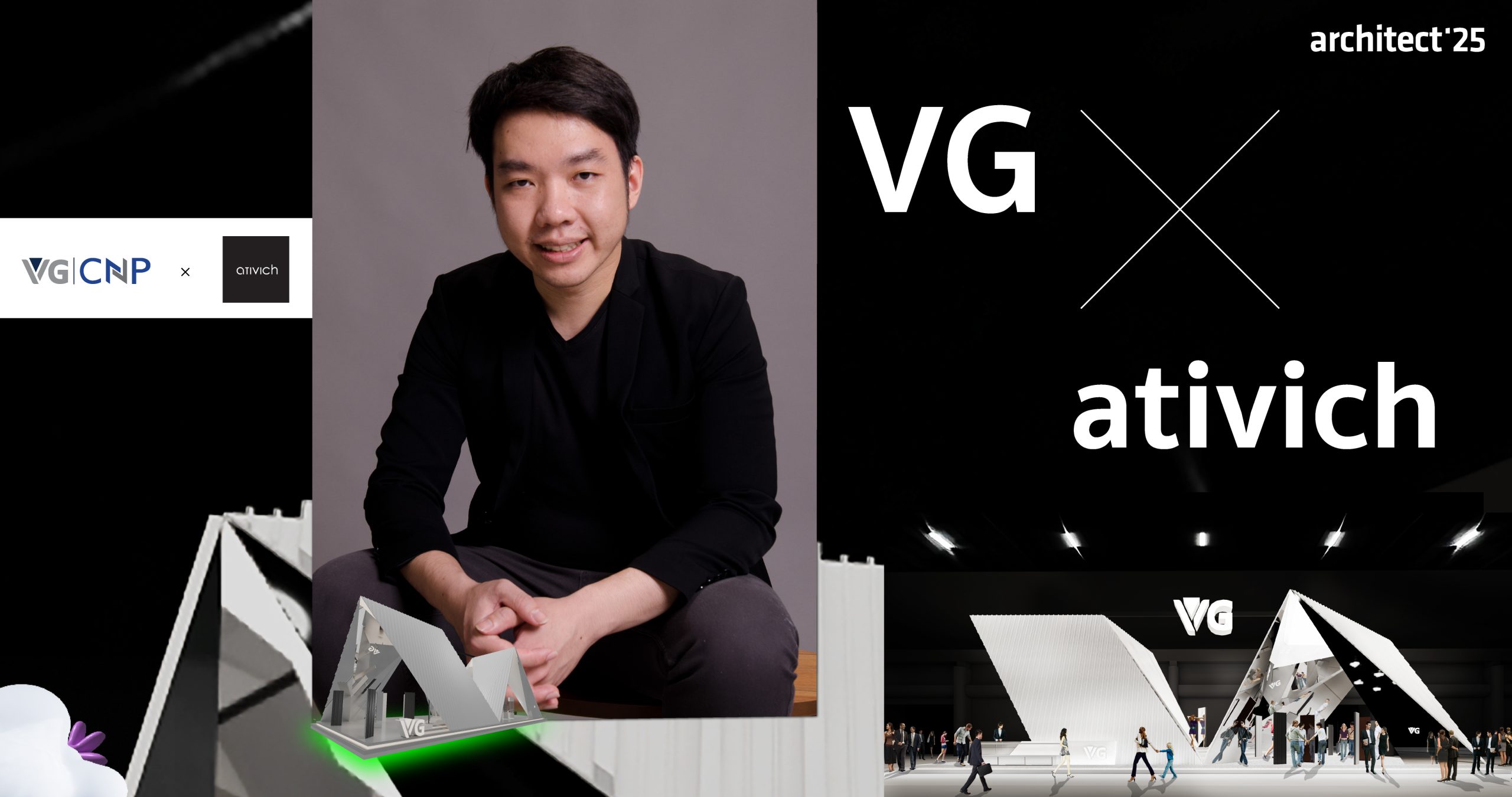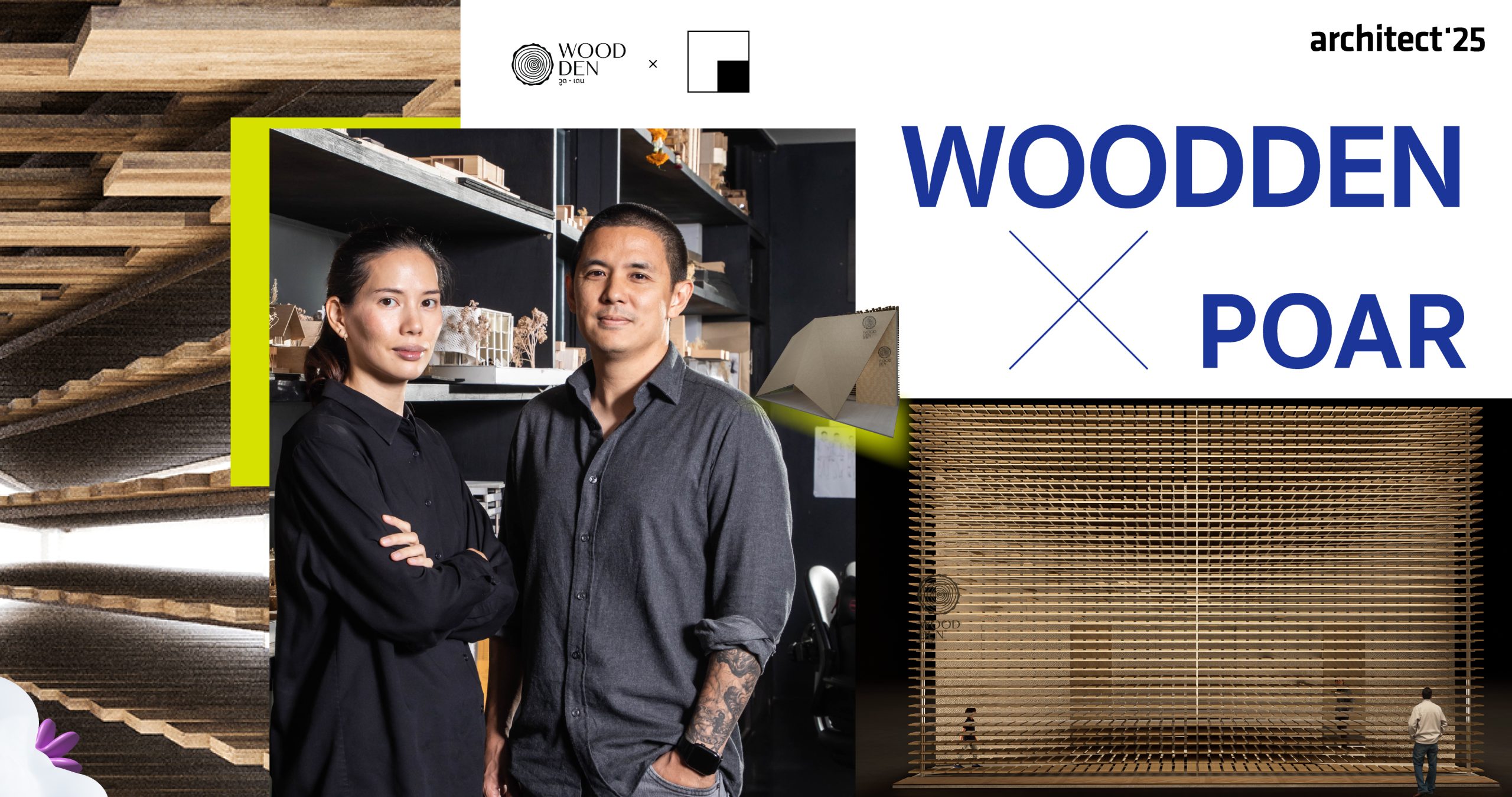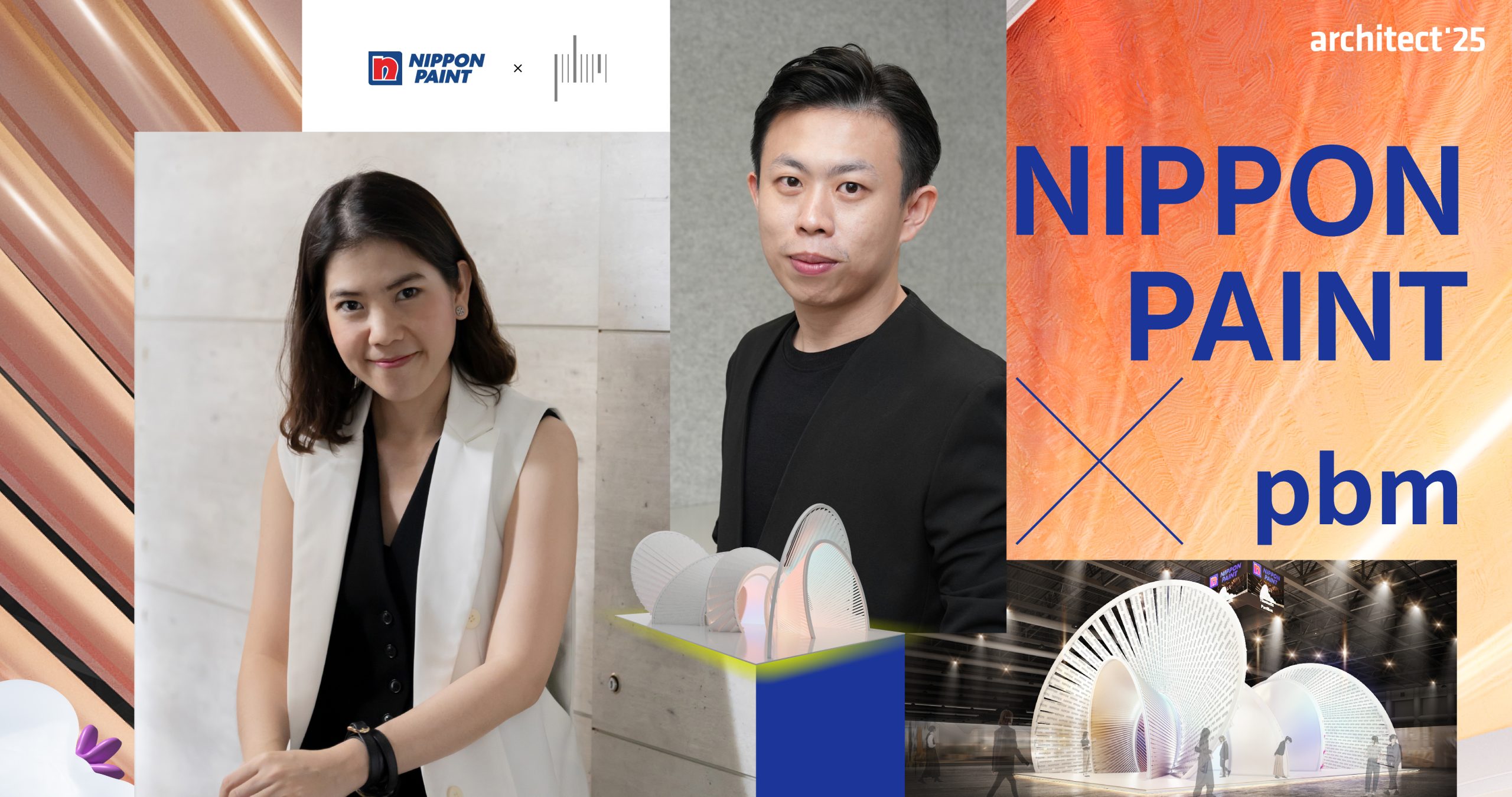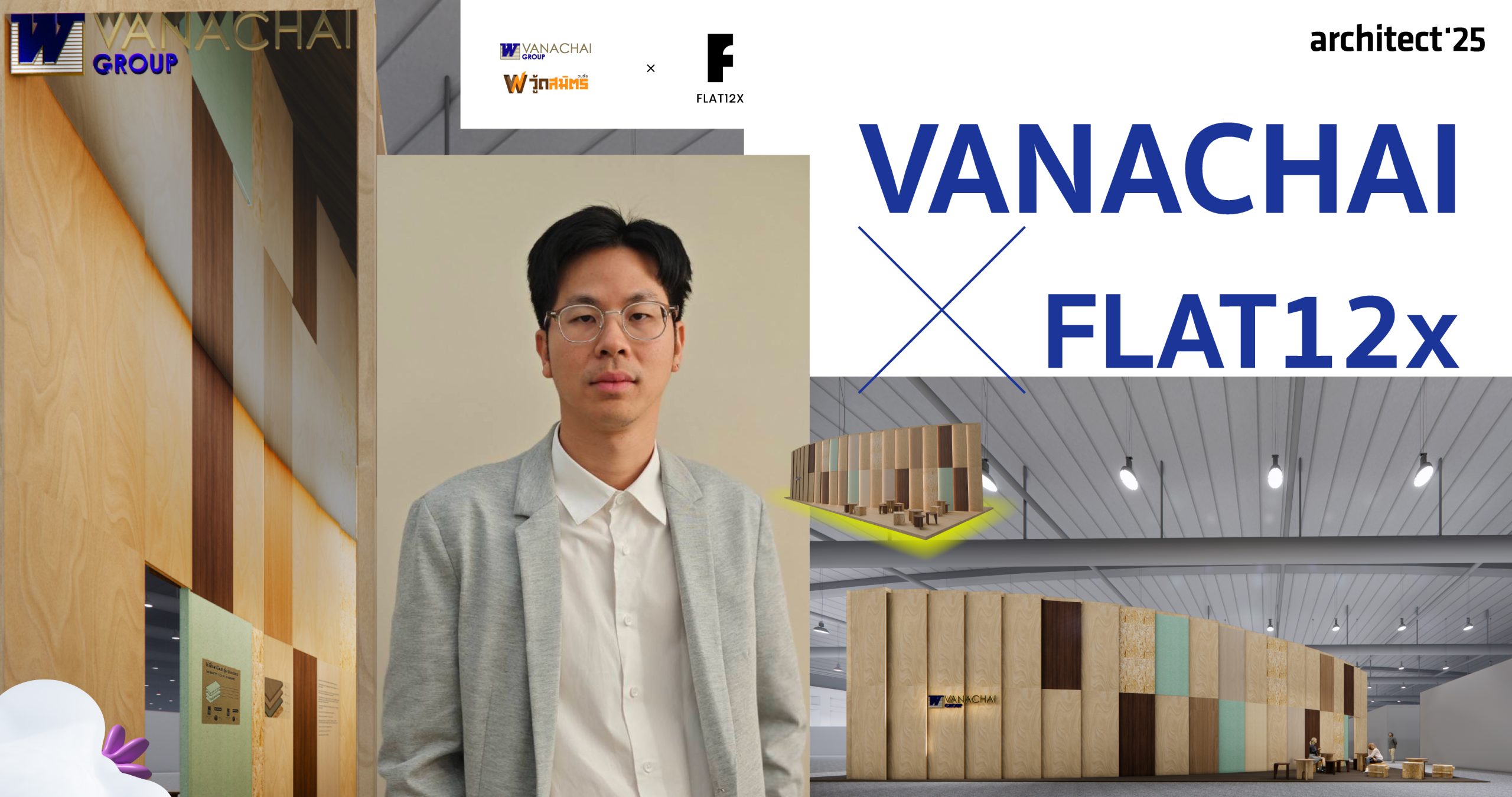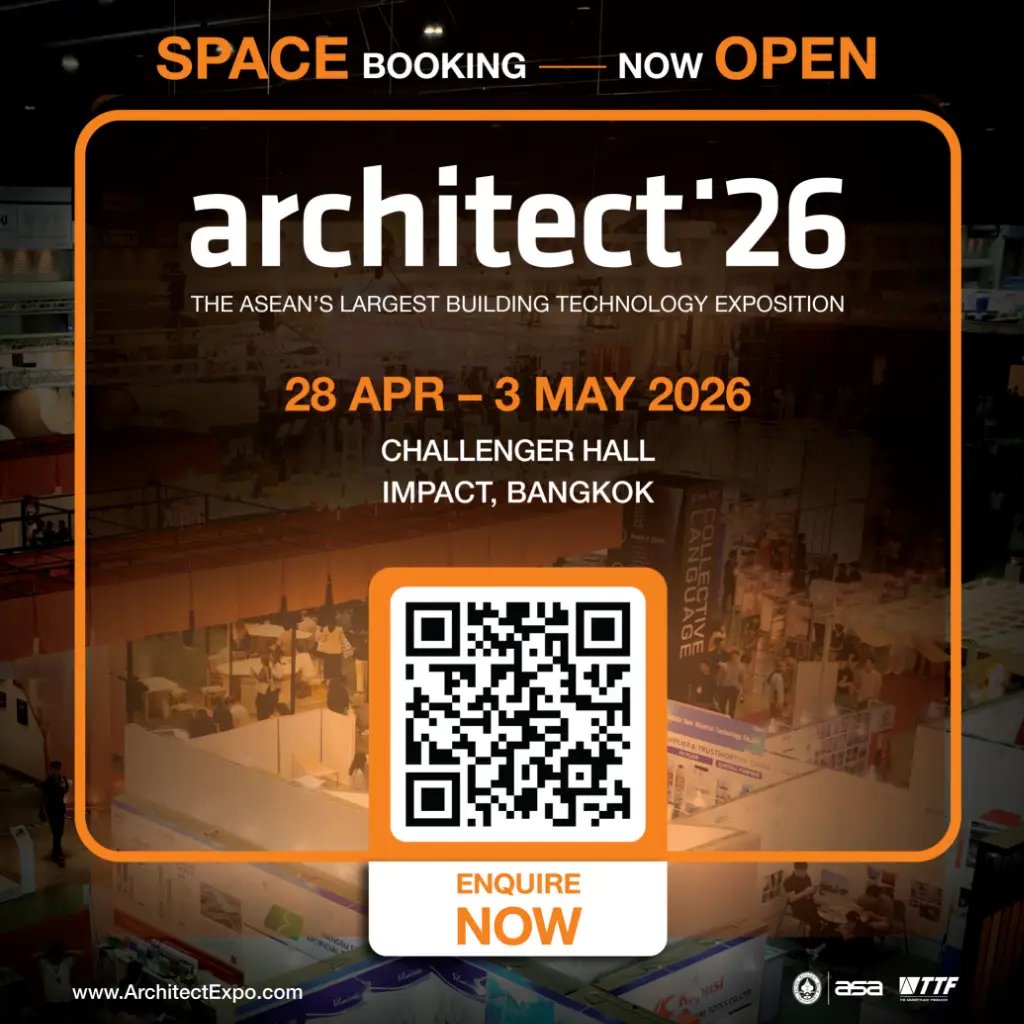Amidst the global movement towards Sustainable Architecture, each designer brings a unique perspective on how to define and apply it creatively.
At Architect’25, the Thematic Pavilion serves as an experimental platform designed to spark dialogue around architectural innovation—particularly through material use. Unsurprisingly, ‘sustainability’ is the underlying theme of every installation, especially considering these temporary structures are displayed for just a few days, demanding meticulous and thoughtful design.
The collaborative pavilion by FAMELINE and A&A is a testament to creative energy and a bold statement on sustainability, presented through a futuristic architectural language that surprises at every turn. Nearly all materials used were upcycled from leftover industrial scraps—a daring move that elevates waste into art.

We sat down with Khun Jeed – Nives Vaseenon, VP of Project Design at A&A, to explore the story behind this thought-provoking pavilion.
CONCEPT: ‘Sustainability, Creativity and Materials’
What happens when sustainability, creativity, and material intersect? For this year’s pavilion, FAMELINE set out to present a vision of sustainable architecture rooted in circular economy principles—maximizing the value of reusable materials while inspiring with striking, structurally challenging design. Connecting creativity with intriguing and challenging structural design for the public and architects alike to develop such ideas to create more works in the future.
More than just a product showcase, this pavilion is an immersive experience that embodies FAMELINE’s core values—responsible innovation and a deep understanding of architectural design—while encouraging future-forward thinking and creative exploration.
FAMELINE’S PAVILION
MY TIME, MY SPACE
Building on years of collaboration and a deep understanding of FAMELINE’s journey, Khun Jeed drew inspiration from the company’s evolution which evolves with generations—from a steel trading business to a leading manufacturer of architectural finishing materials under the name FAMELINE. At the heart of the design is the concept of shared roots between generations, represented metaphorically through materials.
“The materials come from the same roots—like the bond between a parent and a child. The parent provides the foundation, and the child grows into a tree. That idea became the core of this pavilion.”
This metaphor unfolds throughout the pavilion’s form and material choices, centered on the concept ‘My Time, My Space’. It expresses inspiration derived from the passage of time and the importance of space.
- My Time: reflects FAMELINE’s ongoing evolution, shown through the progression of aluminum and metal materials adapted for modern use
- My Space: represents a deeply personal sense of identity through design by connecting the feeling of “space reflecting identity” and “design value”—highlighting the flexibility and creativity of cladding materials that shape each individual’s perception and spatial experience


Steel forms the pavilion’s foundational structure—an homage to the company’s origins—while its curves suggest the passage of time. Around it, FAMELINE’s cladding products act as branches, symbolizing innovation and growth. This architectural language showcases FAMELINE’s continuous evolution as a design-forward, material-savvy brand, resonating with their long-held philosophy: Always Beyond.

Inside, the space is designed to support exhibitions of cutting-edge materials, including transparent solar glass (PV Glass), Terratex terracotta panels, and more. A web application displays color and texture simulations on sample buildings, helping visitors visualize real-world applications. A communal area also invites open discussion and knowledge exchange, sparking creative design ideas.
UPCYCLED MATERIALS
WASTE, REIMAGINED
“In my opinion, with the theme of Sustainable Architecture and you only have six days to display the pavilion, it makes more sense to use existing materials than to create new ones. We decided to use leftover cladding from the production line—materials that still had quality even after their original use. The various colors of claddings come from these scraps. Some pieces had scratches, some had stickers—we left them as-is to tell their story.”
What sets this pavilion apart is its raw, honest aesthetic. The materials were not refined or polished, but instead celebrated for their imperfections. Scratches, labels, and irregular dimensions were all kept intact, forming a patchwork of reclaimed history. Up close, visitors can truly appreciate the individual story behind each piece—and imagine the creative potential in discarded materials.

A striking feature of the pavilion is its ultra-modern, semi-transparent curtain made from aluminium cladding, a design that not only showcases visual innovation but also celebrates material potential and craftsmanship. The curtain is constructed from over 2,000 modular folded pieces of Aluminium Composite Panels provided by FAMELINE. The typically glossy, colored side of the aluminium, usually displayed outward, is turned inward. LED lights are installed within the folds, casting dynamic shadows and reflections, encouraging visitors to slow down, step closer, and consider the roots of the material.
‘EXPO’NENTIAL SPACE
The pavilion poses a bold question: How far can materials like aluminum honeycomb and composite panels go in redefining sustainable architecture? FAMELINE invites visitors to rethink these materials—not just as strong, lightweight, and beautiful, but as powerful tools for sustainable design. Update your knowledge in selecting sustainable materials at FAMELINE’s pavilion.
Discuss and experience the real design by yourself at Architect’25 “Reviewing Direction: Past Present Perfect” held from April 29 to May 4, 2025, at Challenger Hall, IMPACT Muang Thong Thani.
“I believe Architect’25 is a must-see event for students, architects, designers, homeowners, and developers. Every booth showcases thoughtful design. Just visit this event and you will find a whole new world and meet industry peers. There are so many ideas, and not just ideas, you may just get ways how to use those ideas. It’s not just informative—it’s inspiring.”

